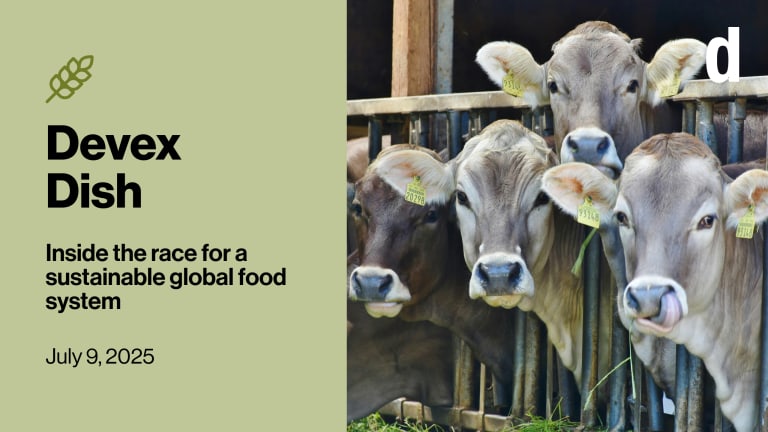
Bird flu, Ebola, COVID-19, and now monkeypox: The list of widely recognized zoonotic diseases continues to lengthen. Yet hundreds of millions of people in Africa are much more likely to get sick and die from the food they eat than the new and alarming diseases that can close down their economies.
Many of the top foodborne diseases identified by the World Health Organization have their origins in animals, causing 135 million cases of illness a year in Africa, which is home to the world’s highest per-capita rate of foodborne illnesses. Not only does this hold back and burden African countries, but it adds to the threats to global health security.
As the world increasingly accepts the need for an integrated “One Health” approach in the wake of the COVID-19 pandemic and as undernutrition continues to hold back human and economic development, investment in food safety improvements for lower-income countries must be ramped up.
With a burden comparable to malaria and HIV/AIDS, foodborne illness must be prioritized as a One Health issue that both impacts and is impacted by animal, human, and environmental health.
Investing in prevention
Investing in prevention can bring down the human and economic toll of foodborne illness.
Many foodborne diseases around the world have been successfully controlled by vaccination in livestock. Salmonella infections, for example, are relatively rare in Sweden thanks to widespread poultry vaccination.
If such measures were fully adopted in Africa, they could reduce the continent’s 137,000 deaths per year as a result of contaminated food. These deaths and illnesses amount to an annual loss of $17 billion in productivity and $2.5 billion in treatment costs.
Developing livestock vaccines that are cost-effective, stable, and scalable is no simple task, which is why the International Livestock Research Institute is partnering with animal health experts including the Global Alliance for Livestock Veterinary Medicines and Clinglobal to offer a one-stop shop for developing new and effective veterinary vaccines.
Livestock health
Tackling the diseases that cause foodborne illness also benefits the health of farm animals, which in turn increases their potential for producing food and generating income.
For example, around 1 in 10 cows in lower-income countries suffer from brucellosis, a preventable bacterial infection that spreads to people through raw or unpasteurized dairy products and reduces cattle productivity by about 10%.
By incorporating livestock vaccination programs into strategies for tackling foodborne illness, governments can unlock double benefits for both human and animal health, as well as economic productivity. An added benefit of preventing animal-borne diseases like brucellosis at the source is that it also decreases the need for antibiotics, preserving these vital drugs as a last resort.
Food safety standards
Reducing the burden of foodborne illness requires more investment and resources directed at environmental factors, particularly those within informal food markets.
Traditional markets, also known as wet markets, sell much of the fresh food eaten in many African countries but come with the risks of limited or unsophisticated infrastructure for keeping food safe and clean.
De-risking these environments and improving food safety and hygiene standards through training and technology, including refrigeration, would limit the emergence of cross-species infections — such those caused by coronaviruses — while ensuring they continue to provide access to affordable food for low-income communities. This, in turn, would take pressure off wildlife and ecosystems by guaranteeing the safety of more meat, milk, and eggs.
Since a landmark assessment of the global burden of foodborne disease was first published by WHO in 2015, scientific understanding of the health threats associated with food systems has rapidly increased. However, the issue remains grossly neglected at a policy level.
The African Union recently launched a new food safety strategy for Africa, but the reality is that disease threat anywhere is a threat to public health everywhere.
The good news is that we have the evidence and tools to improve food safety, while at the same time reducing the risks of other One Health challenges such as emerging diseases and antibiotic resistance.









